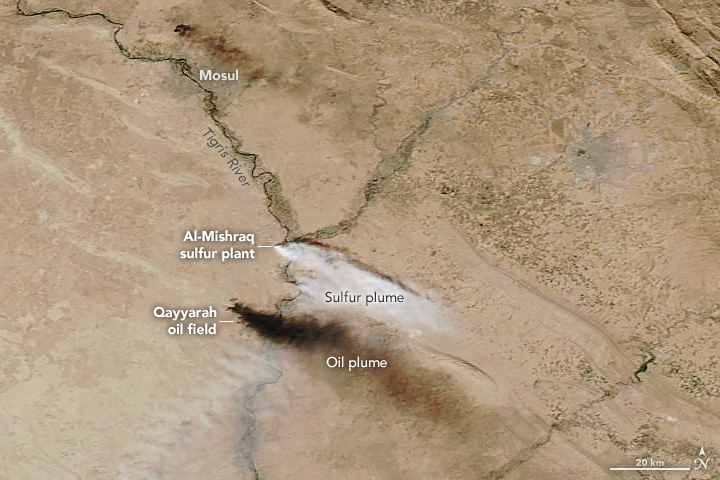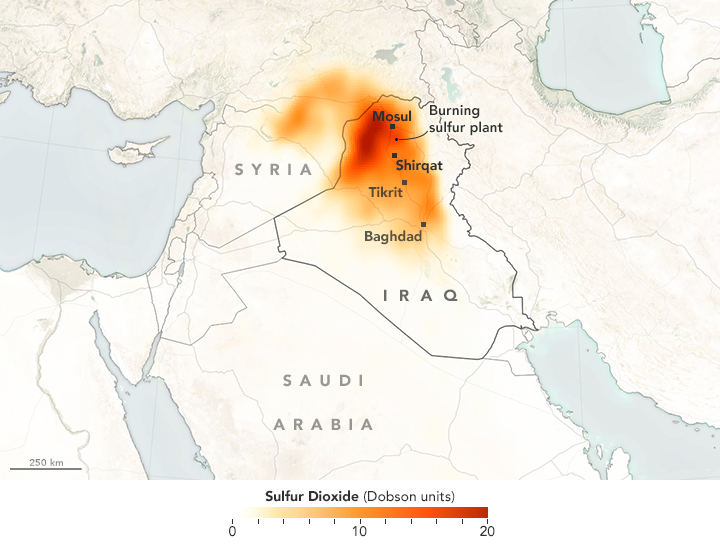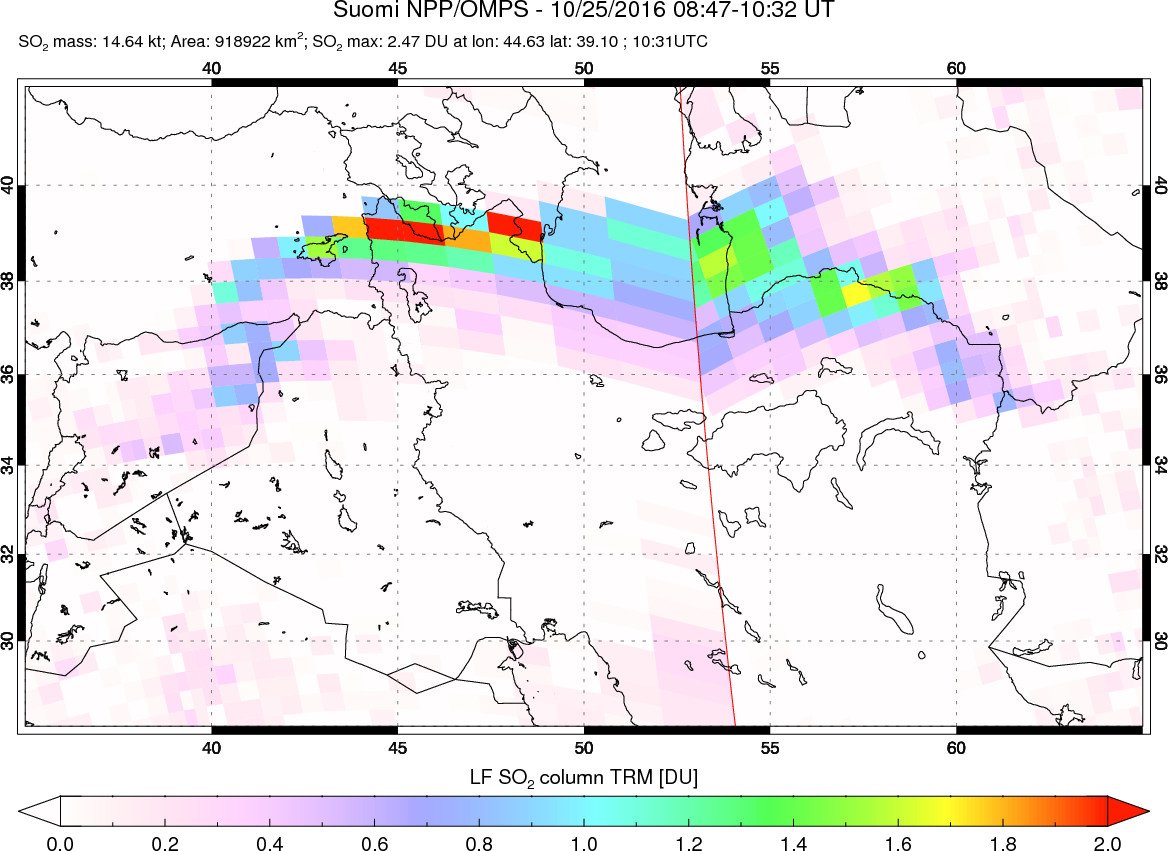A fire at a sulfur mine in Iraq is releasing tremendous quantities of sulfur dioxide into the atmosphere for the sixth day in a row.
If this fire was a volcano, it would already be among the largest eruptions of 2016.

NASA’s Terra and Aqua satellites first detected the heat signature of the fire at Al-Mishraq facility on October 20, 2016.
By the next day, a plume of toxic white smoke was streaming from the facility, killing at least two Iraqi civilians and prompting nearly 1 000 to seek medical attention.

At the same time, the Ozone Monitoring Instrument on Aura and the Ozone Mapping Profiler Suite (OMPS) on Suomi NPP began making observations of a large sulfur dioxide plume spreading across northern and central Iraq.

Initially, OMI detected sulfur dioxide in the planetary boundary layer and lower troposphere, the lowest parts of the atmosphere, but over the next few days, the plume responded to shifting winds and reached higher into the atmosphere.
This same facility was on fire in 2003. After nearly a month of burning, the 2003 fire had released roughly 600 kilotons of sulfur dioxide – so much that it was the largest non-volcanic release of sulfur dioxide we had ever observed with satellites.
SO2 from the #Iraq sulfur fire, Oct 25. If fire = #volcano, it would be among the largest eruptions of 2016 (a quiet year so far) @NASANPP pic.twitter.com/TGJak3Pxcr
— Simon Carn (@simoncarn) October 25, 2016
If the sulfur dioxide were coming from a volcano rather than a fire, it would already be among the largest eruptions of 2016 (a quiet year so far), Carn noted in a tweet on October 25, 2016.











